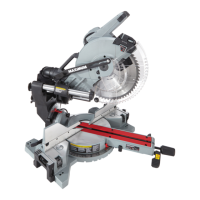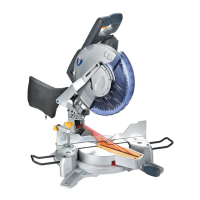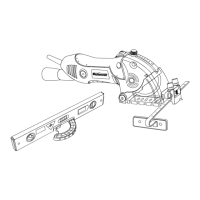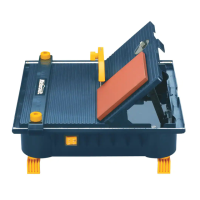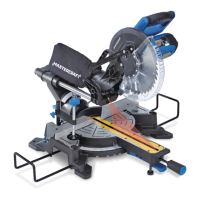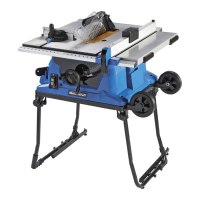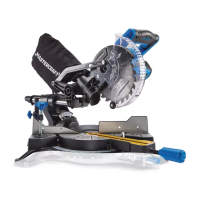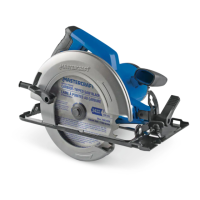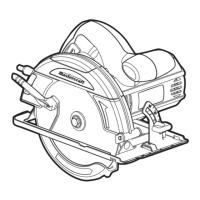PRACTICE CUTS USING FREEHAND CUTTING GUIDE
Before attempting to work on an actual project, take the
time to make a few practice cuts with your Spin Saw. Use
some scrap pieces that are the same material as what will
be used in your actual project.
1. Draw a pattern similar to your first project on a scrap
piece of material.
2. Install freehand cutting guide as shown in Fig. 4.
3. Install cutting bit in the collet as shown in Fig. 2.
4. Adjust depth of freehand cutting guide as shown in
Fig. 5.
5. Rest the edge of the cutting guide on the workpiece
with the bit at an angle of about 45
o
(see Fig. 6).
NOTE: DO NOT let the bit contact the workpiece until
switch is turned ON and the tool is up to full speed.
Before turning the tool switch ON, make sure you
hold the tool firmly with both hands. Starting
torque will cause the tool to twist.
PRACTICE CUTS USING FREEHAND CUTTING GUIDE
6. Set the speed control switch to the appropriate speed.
7. Turn the switch ON.
8. When the motor is up to full speed, slowly tip the tool
to an upright position, letting the bit cut into the
workpiece (see Fig. 7). Once the tool has reached the
upright position and the bit has cut through the
workpiece, slowly move the tool in a clockwise
direction using slow steady pressure to make the cut.
NOTE: Except for cutting around outlet boxes in
drywall, always cut in a clockwise direction.
9. When cut is complete, turn the tool OFF, wait until it
comes to a complete stop and remove it from the
workpiece.
Do not attempt cutting around outlet boxes in drywall
until:
1. All electricity in the vicinity of electric wires has
been disconnected by either turning the breaker
OFF or removing the fuses.
2. You have read the instructions on the following
page entitled “CUTTING OUTLET OPENINGS IN
DRYWALL”.
CUTTING TIPS
The rotating cutting action of the bit will cause a slight pull
to the left when cutting. Natural variations in the structure
of wood will cause the bit to “wander”. This tendency will
be magnified when applying too much pressure to the bit.
Slower cutting gives you better control. Excessive
pressure or fast cutting will increase bit temperature and
shorten the life of the bit.
When cutting a hole in a vertical surface, avoid ending the
cut at the bottom of the hole. Always start and end the cut
at the “top” so the cut-out part will not drop onto the
rotating bit. Always turn the tool OFF before removing it
from the workpiece.
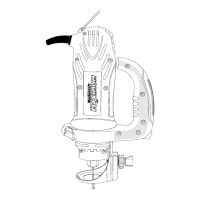
